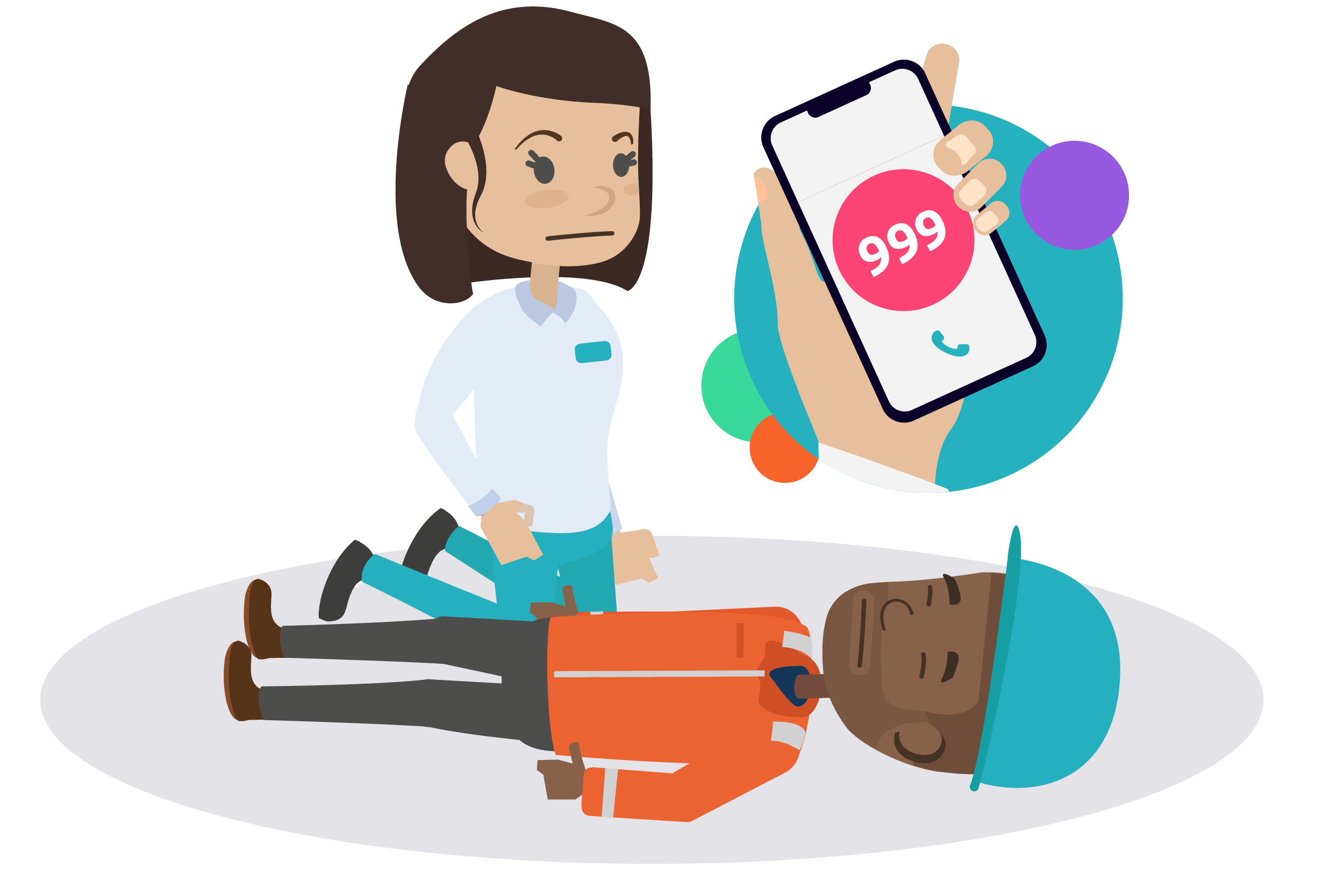Hands-only CPR for business (Free Poster)
What is hands-only CPR?
Hands-only CPR is a method of CPR used to help people suffering from sudden cardiac arrest, that doesn’t require rescue breaths.
Due to its simplicity, hands-only CPR is encouraged by groups such as the British Heart Foundation as an easier way for untrained bystanders to perform CPR.
Hands-only CPR for your business or organisation
We think organisations may be interested in hands-only CPR because staff members may need to use it in an emergency.
In the case of a CPR emergency, the best point of call is to contact the emergency services, who will tell you what to do –but we think it can be helpful for staff to have familiarity with it already.
That’s why hanging our free CPR poster in your office can be really helpful!
For more information on first aid in general, visit our introduction to health and safety.
Download your free CPR Poster
What is cardiac arrest?
A cardiac arrest is when your heart suddenly stops pumping blood around your body. This starves your brain of oxygen, which causes you to fall unconscious and stop breathing.
The difference between a cardiac arrest and a heart attack
Cardiac arrest is an electrical problem, the person will be unconscious. A heart attack is a circulation problem, the person will probably be conscious.
Both cardiac arrests and heart attacks are life-threatening. If you think someone is suffering from either, you should call the emergency services.
What to do first
If you find an unconscious person, do the following:
Check if the person is responding to the world around them.
Check to see if the scene is safe. Hazards could include electric wires, broken glass, or traffic.
Move the person onto their back, gently shake their shoulders and ask out loud “Are you ok?”
If you cannot wake the person, shout for help and stay with the person.
Ask someone to get a defibrillator.
Ask someone to call emergency services, who will help you give CPR. If you’re alone, call emergency services and put you phone on speaker.
Performing hands-only CPR
1. Kneel beside the person’s chest. Loosen their clothing if necessary.
2. Place the heel of one hand in the centre of their chest. Place your other hand on top of the first. Interlock your fingers.
3. With straight arms, use the heel of your hand to push the breastbone down firmly and smoothly, so that the chest is pressed down between 5–6 cm, and release.
4. Do this at a rate of 100 to 120 chest compressions per minute – that’s around 2 per second.
(Push to the beat of “Stayin’ Alive” by Bee Gees or “MMMBop” by Hanson)
5. Do not worry about causing injury. Compressions can sometimes crack ribs but the important thing is to keep the person alive.
6. Continue performing compressions until the ambulance arrives or the person starts to show signs of regaining consciousness.
Download your free CPR poster
Note: Safepoint neither warrants nor represents that the information in this article is suitable for your purposes. It is recommended that you review the information in this article and seek advice in order to ensure that it suits your particular requirements and circumstances. Safepoint therefore accepts no responsibility for your use of the information in this article.










